Charlie James Gallery
SEISMIC
April 12 — May 24, 2025
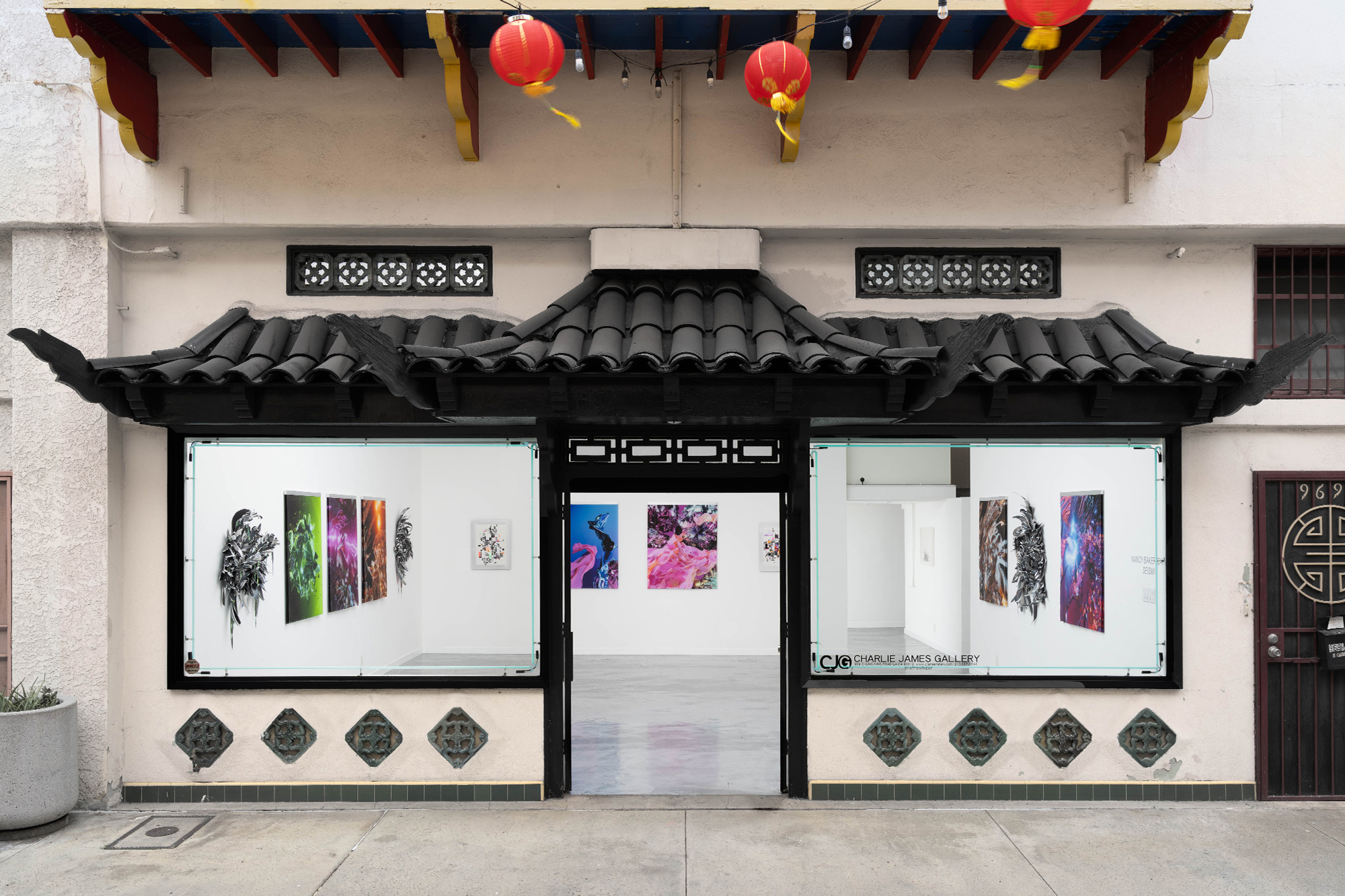
Presented at a moment of catastrophic environmental urgency and social reckoning, amplified by recent events in Los Angeles, Baker Cahill tackles timely concerns that have long animated her practice. The exhibition includes new bodies of work in which Baker Cahill mines her own archive, refashioning archival drawings as raw material for works on paper, sculptural installations, and digital projects that plumb the constantly shifting crises of the current moment. This perceptual play interweaving natural and digital worlds is a keystone of Baker Cahill’s practice, which aims to alternately make sense of and combat cultural and geological instability through ecological concepts of interconnectedness, systems-thinking, and interdependence.
The exhibition opens with nine luscious Pia Mater works, in which crisp, vibrant digital images are doubled and layered, once on a firm canvas base and again on a sheet of silk that flutters with the ambient breeze. Baker Cahill plays with luminosity in these imagined spaces, accentuating the diversity of texture and material that coexists within. These works play with the fragility of perception, pairing soft and hard, fixed and free. “Pia Mater” translates to ‘tender matter’, and is the delicate protective membrane that encases the human brain. An interest in cognition and processing runs through the exhibition, where images from one series or archive are used as material for another – the Pia Mater images, for example, show up again in the Carbon films. This iterative process utilizes a personalized dataset to “train” Baker Cahill’s work in a manner similar to the way artificial intelligence is trained on vast reams of existing data, while at the same time paying homage to the rich history of recombination in digital art.
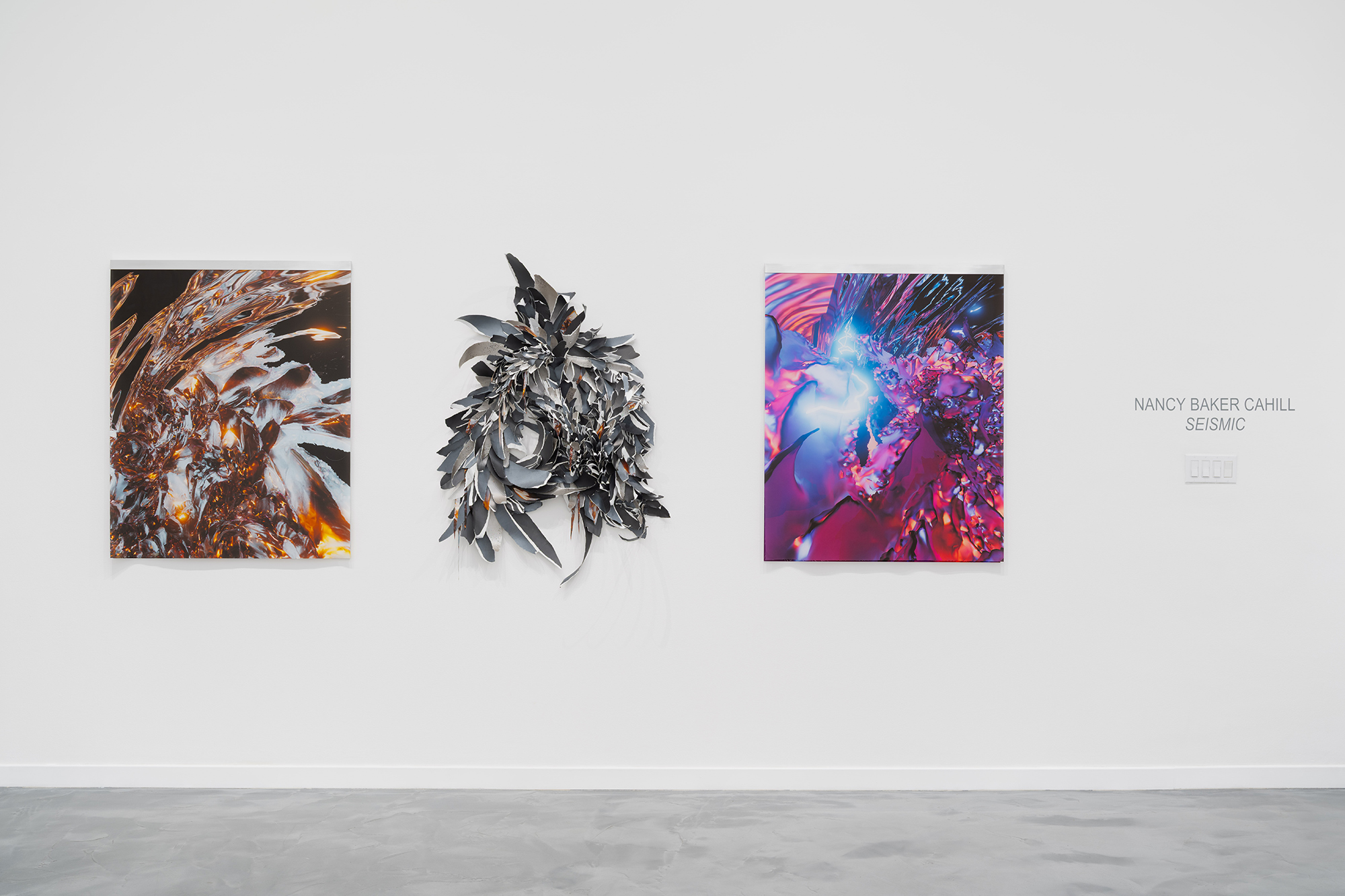
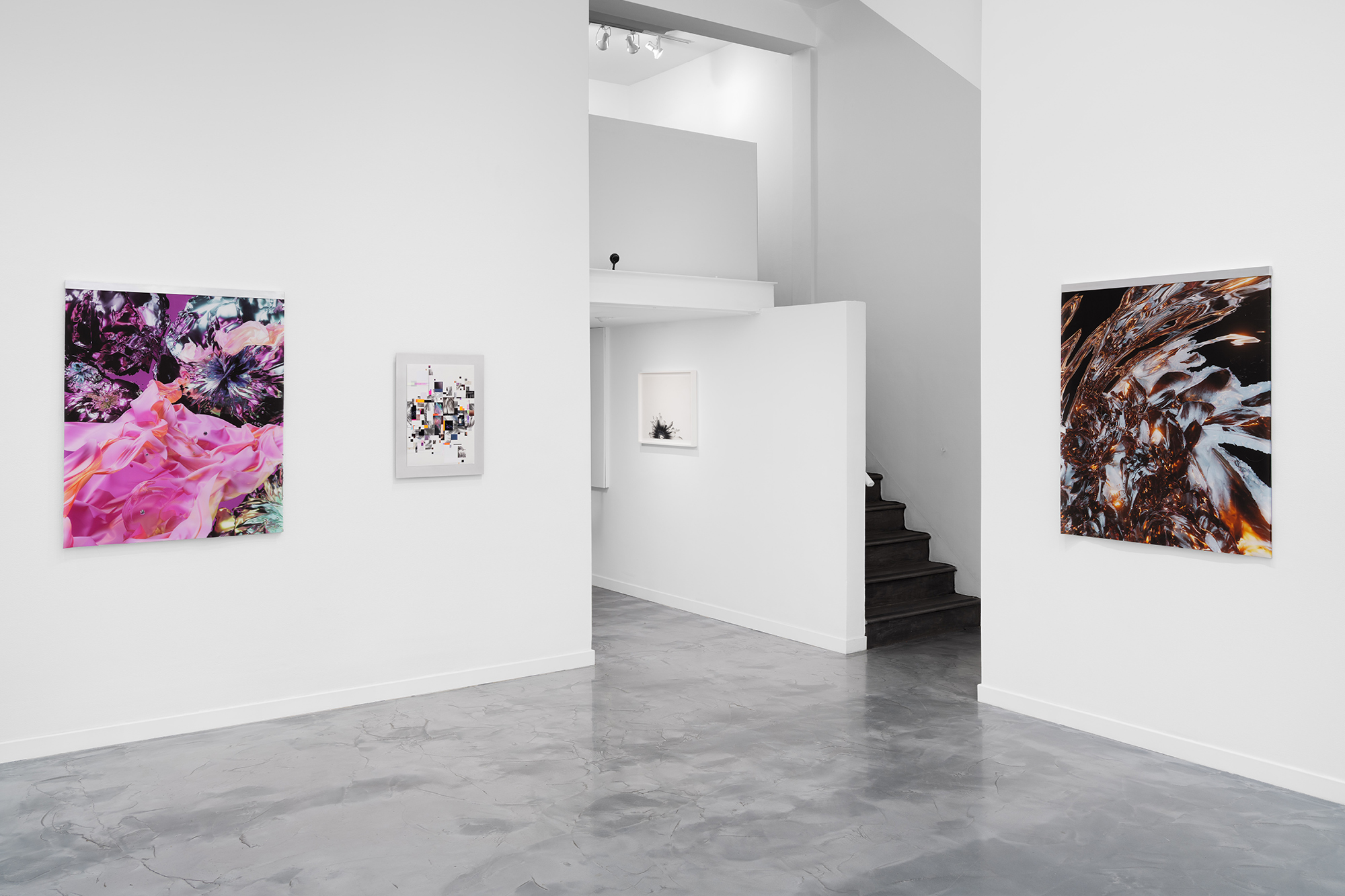
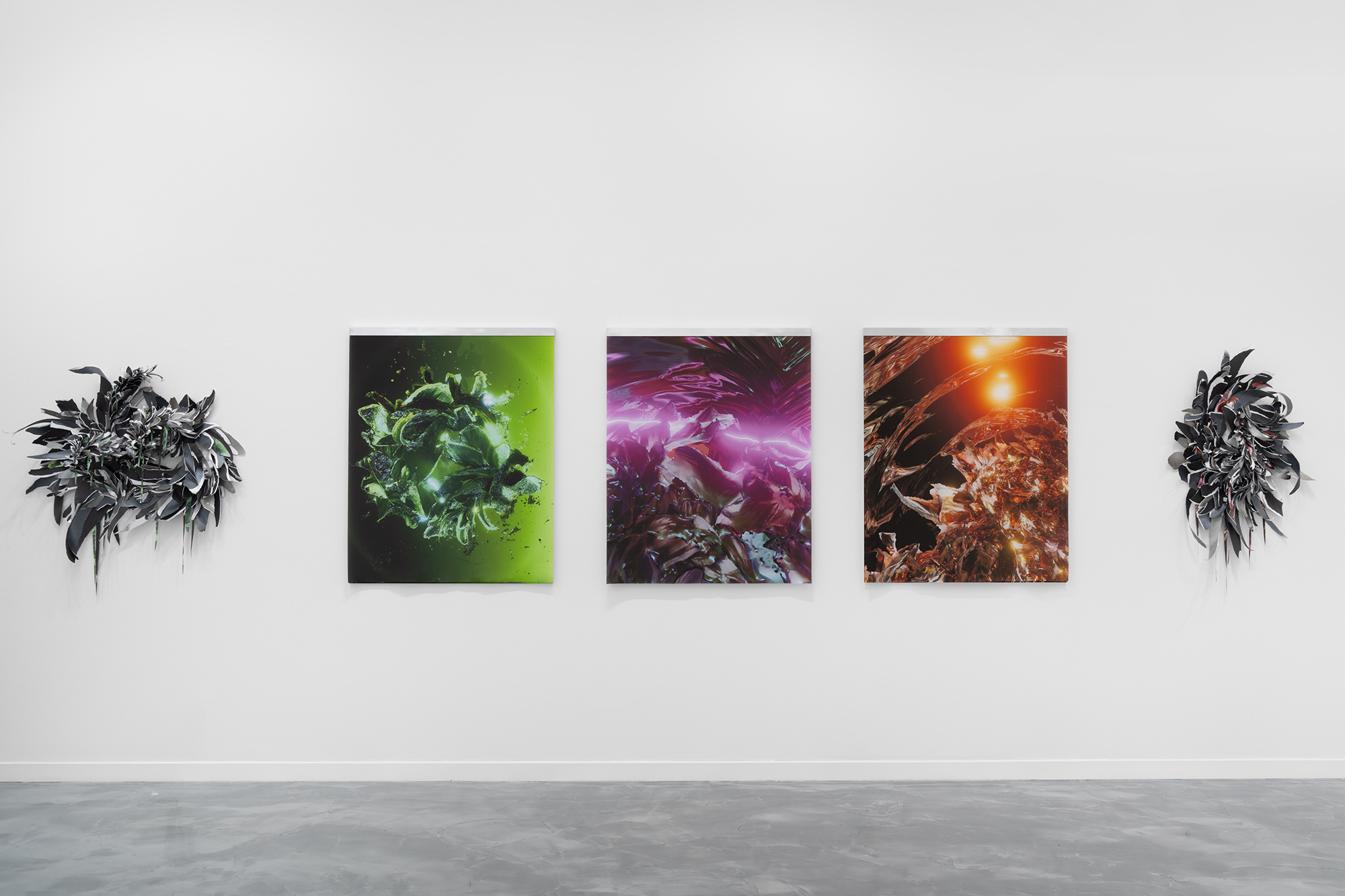
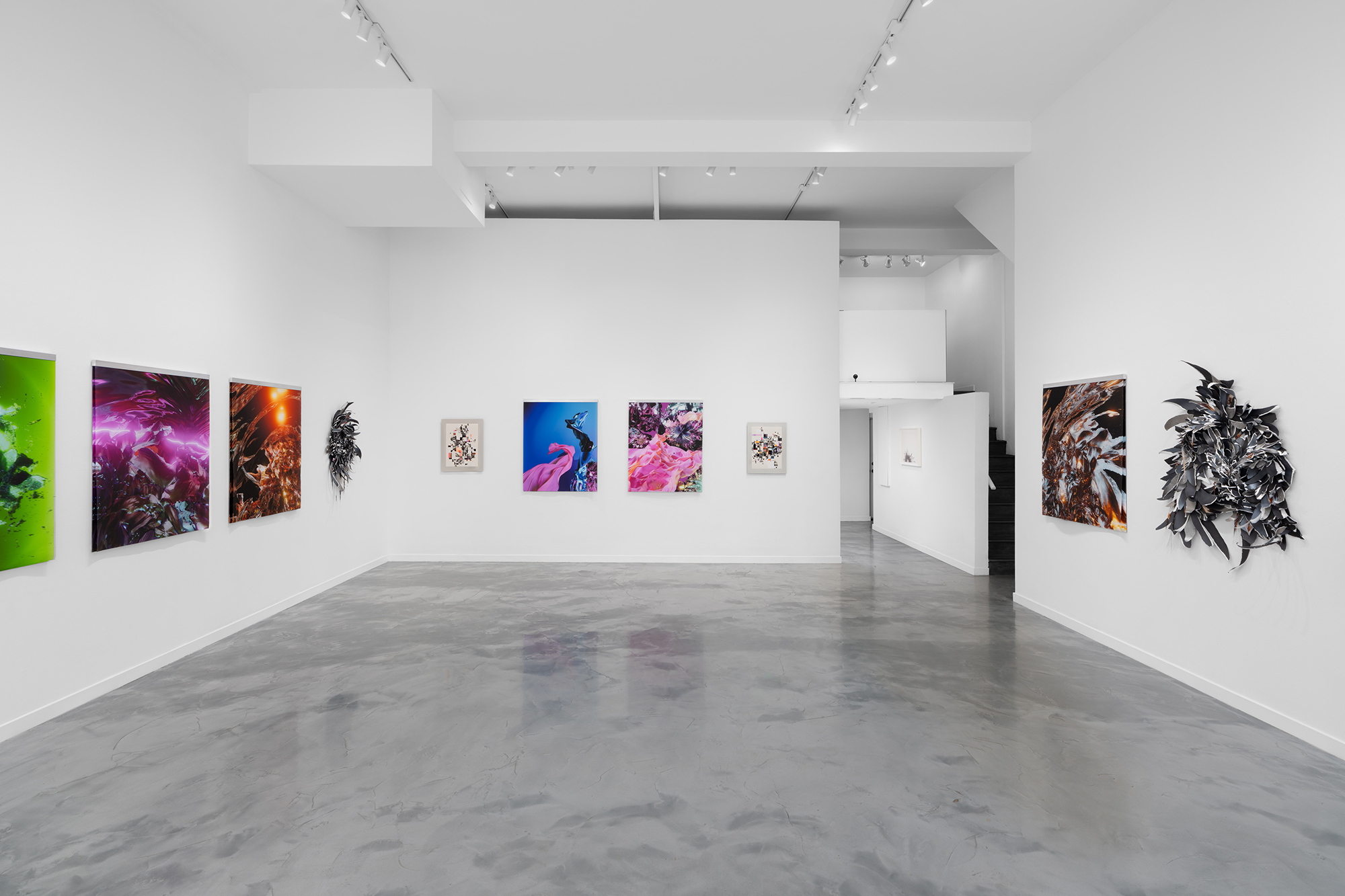




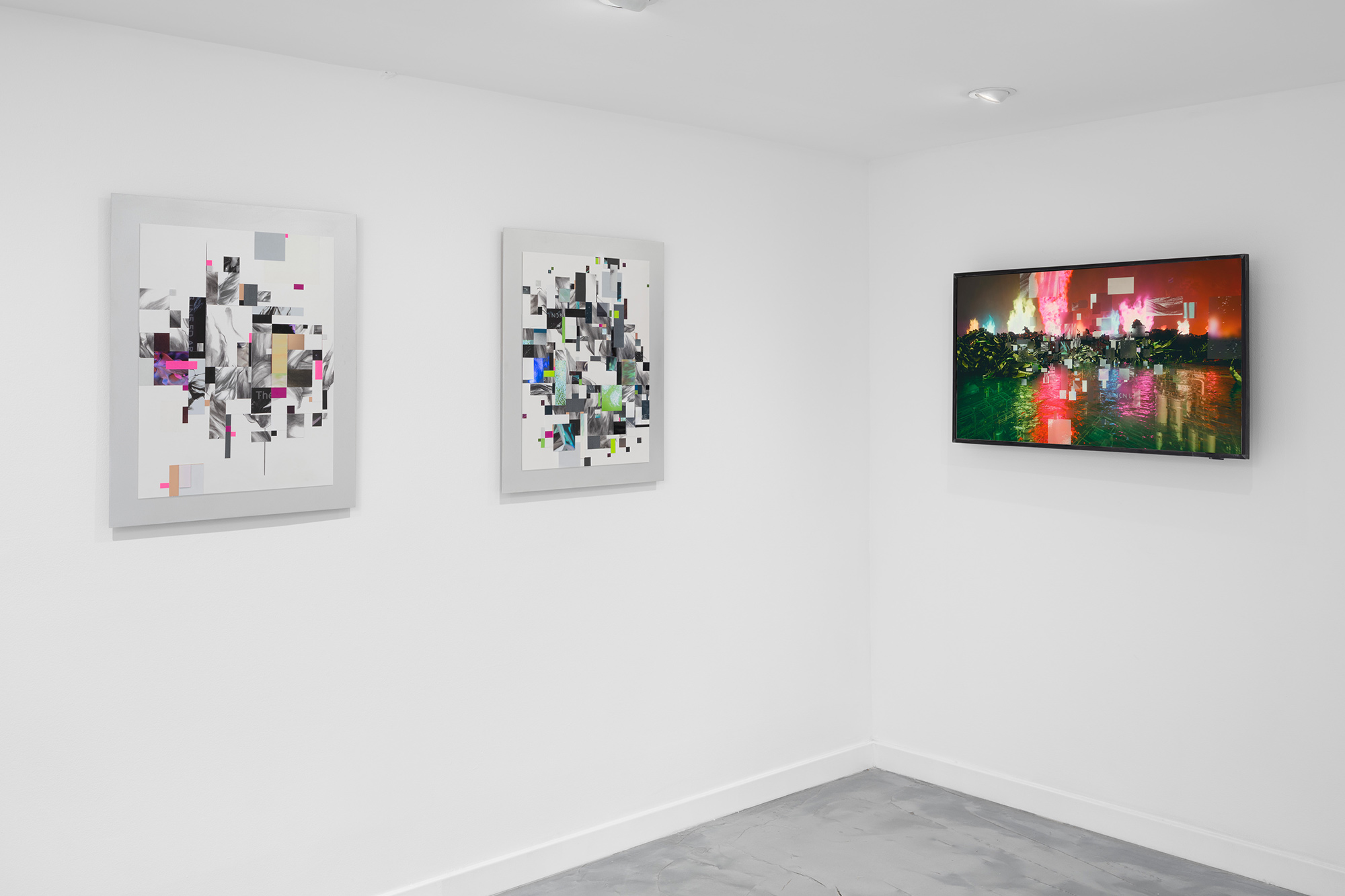
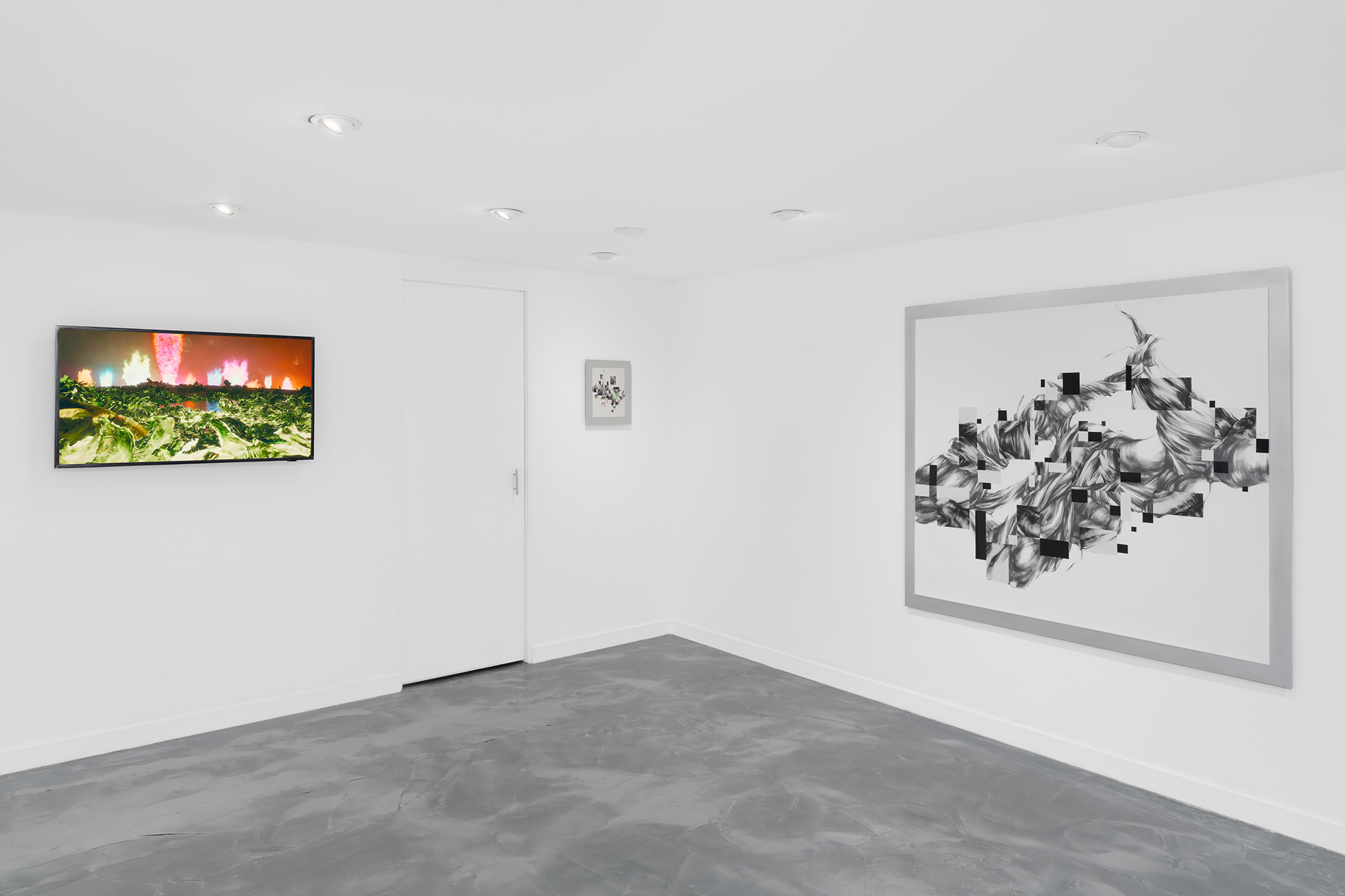
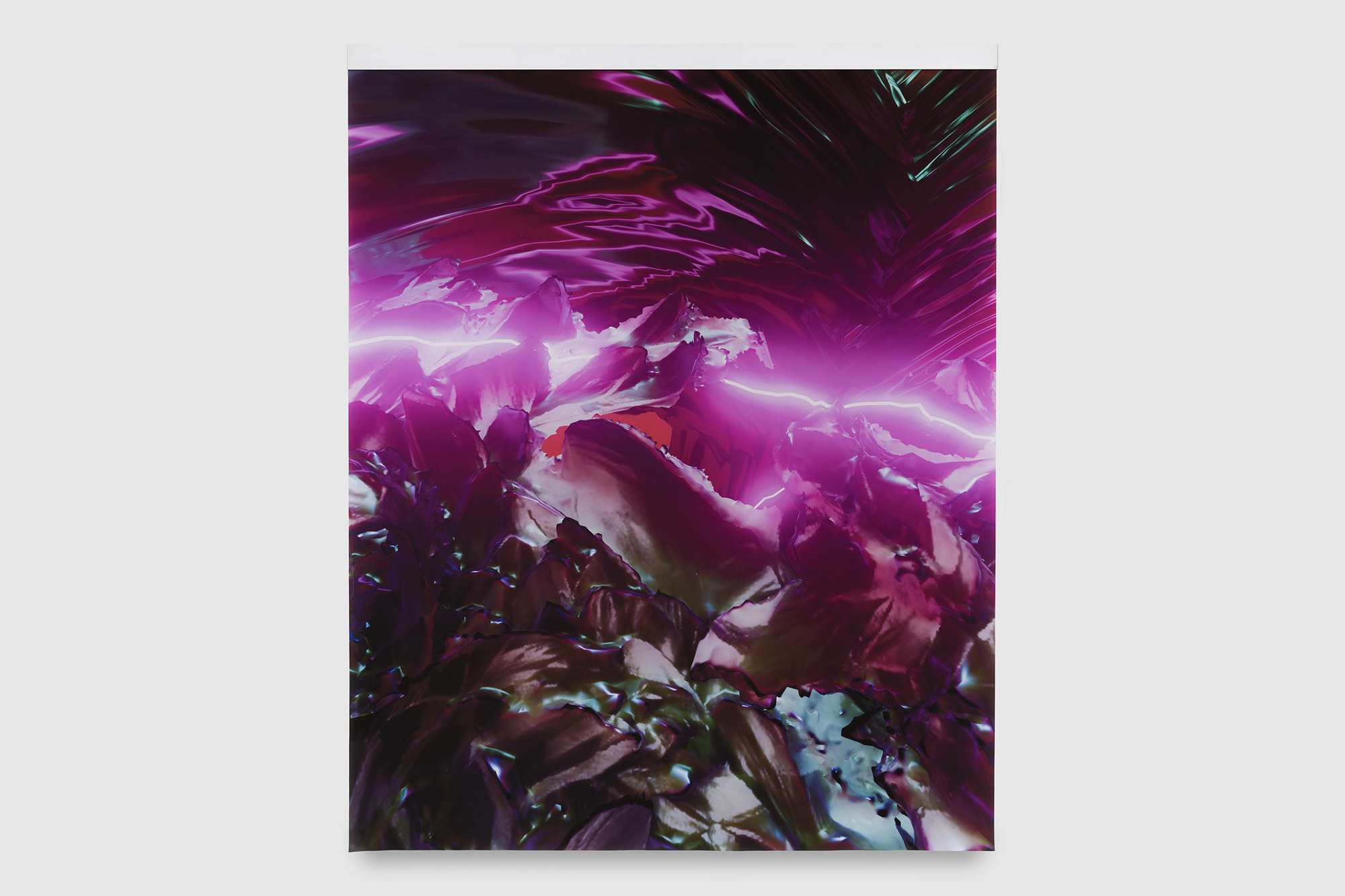

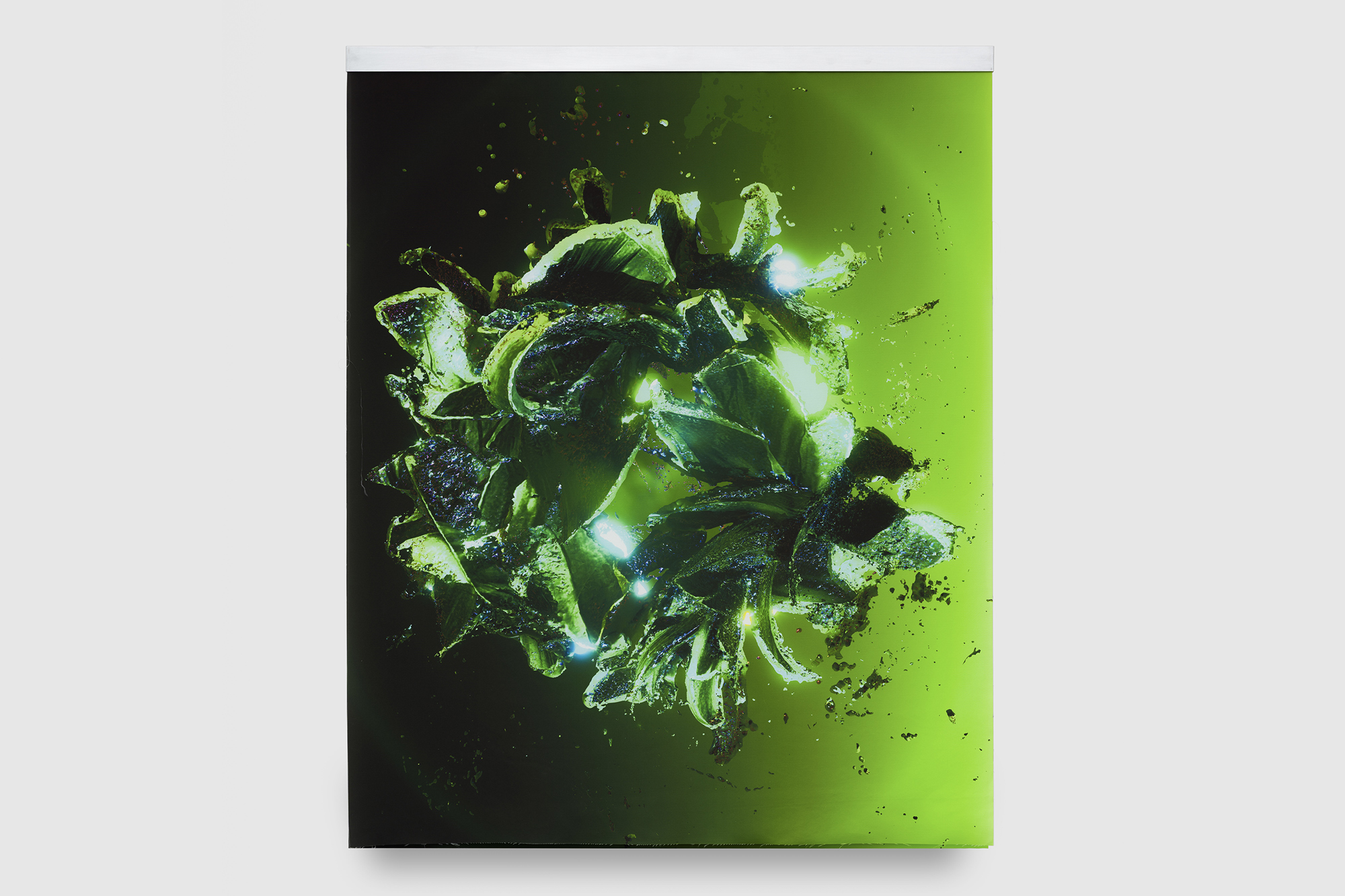
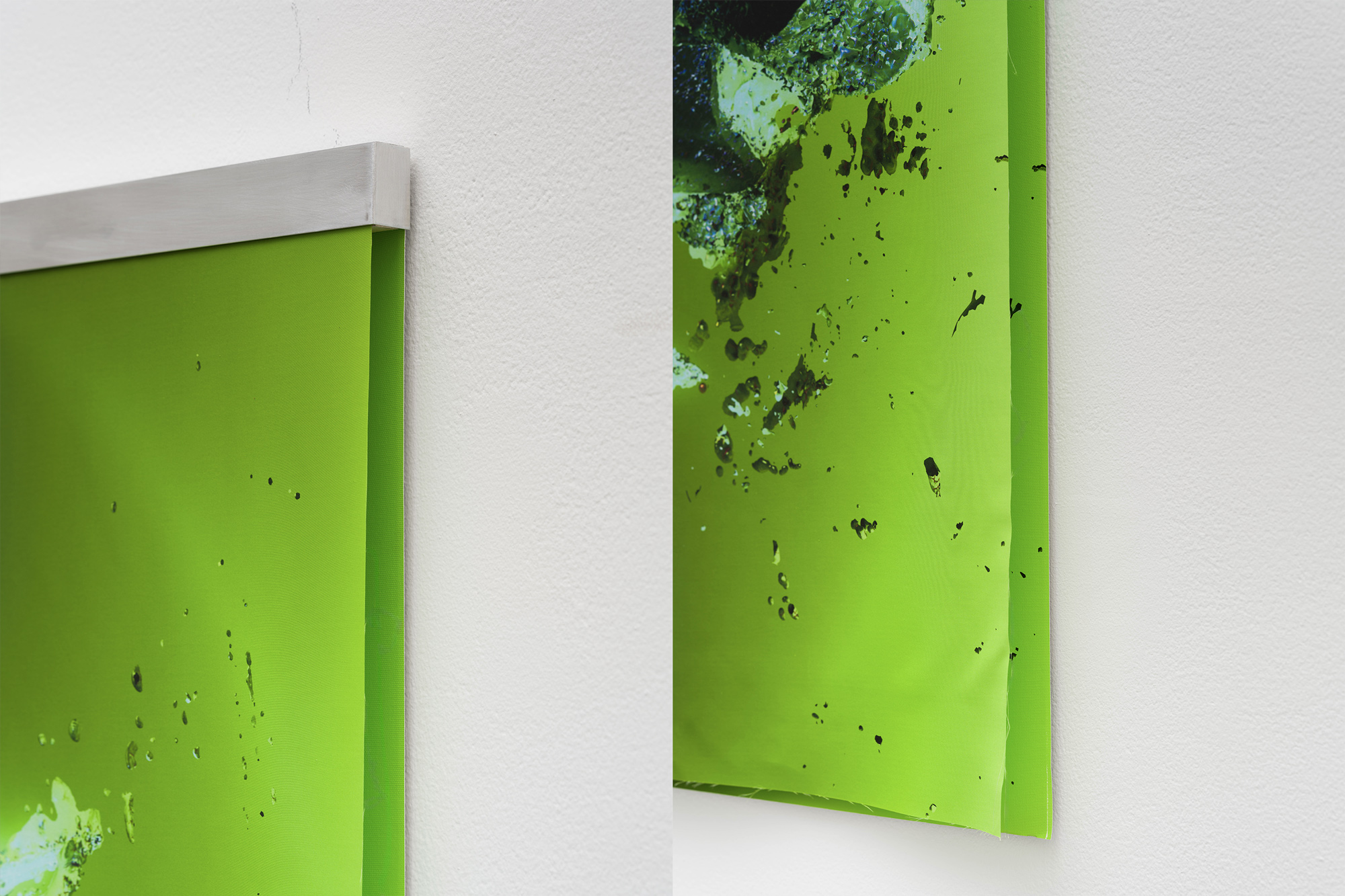
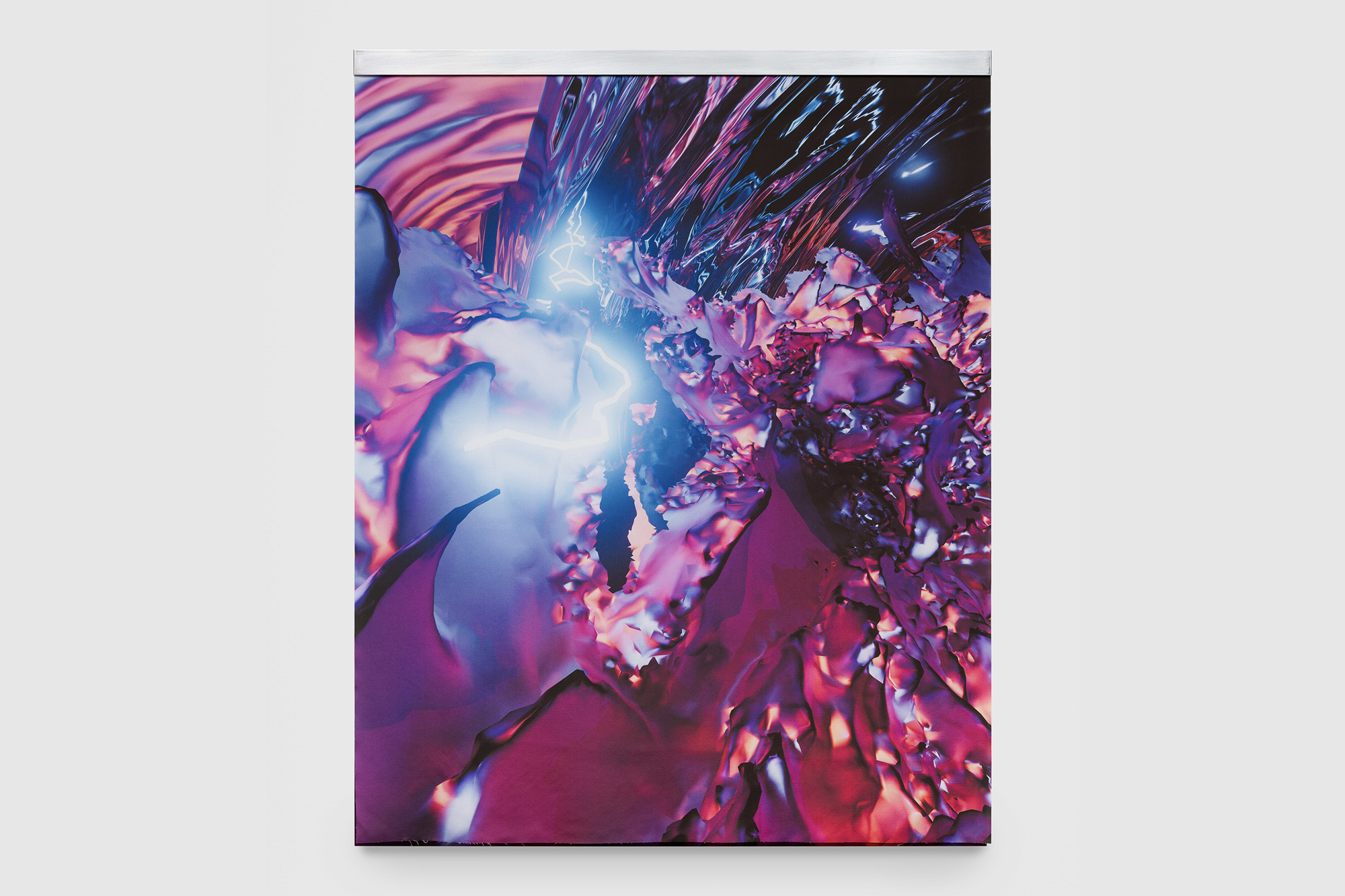


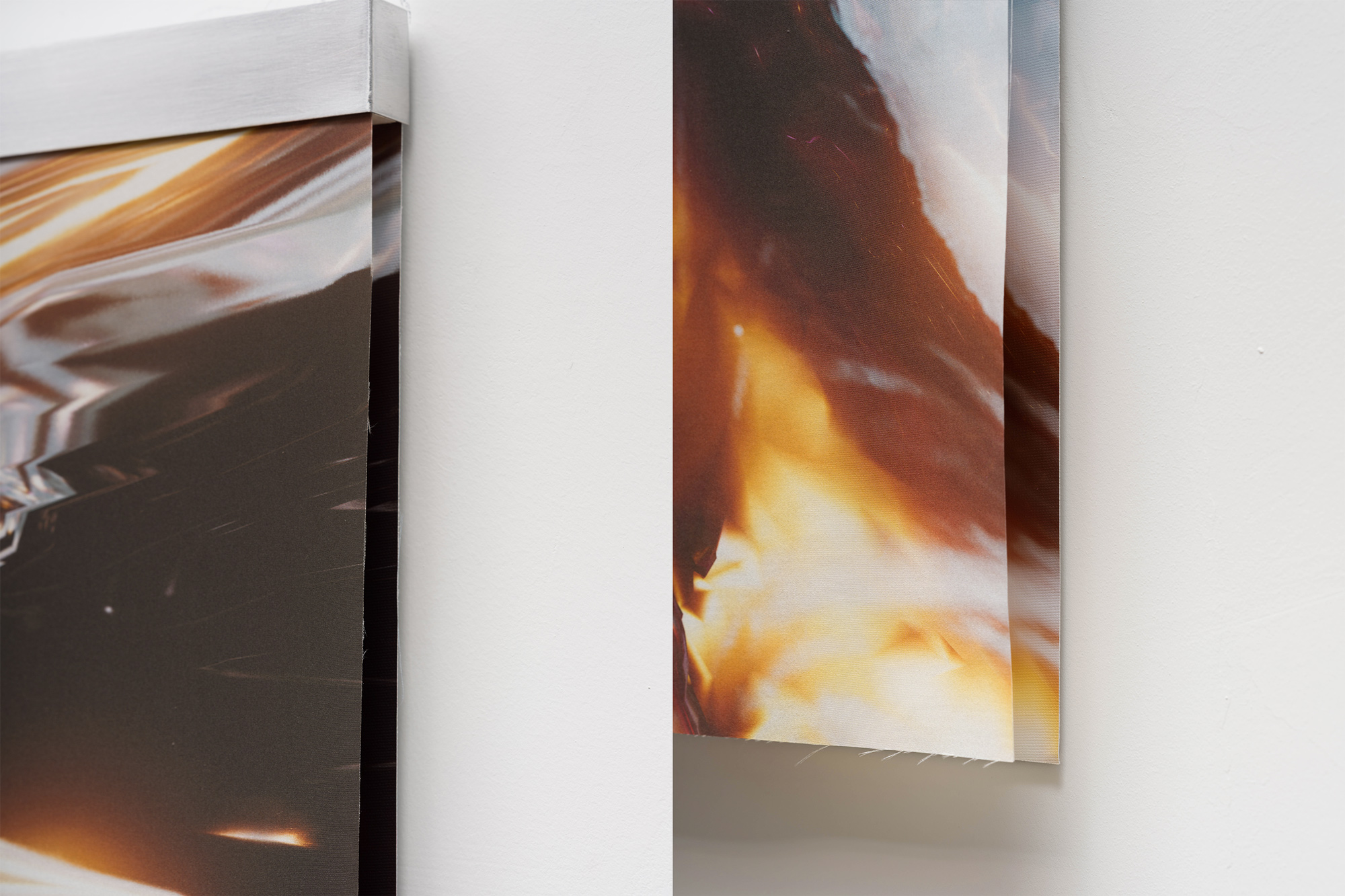

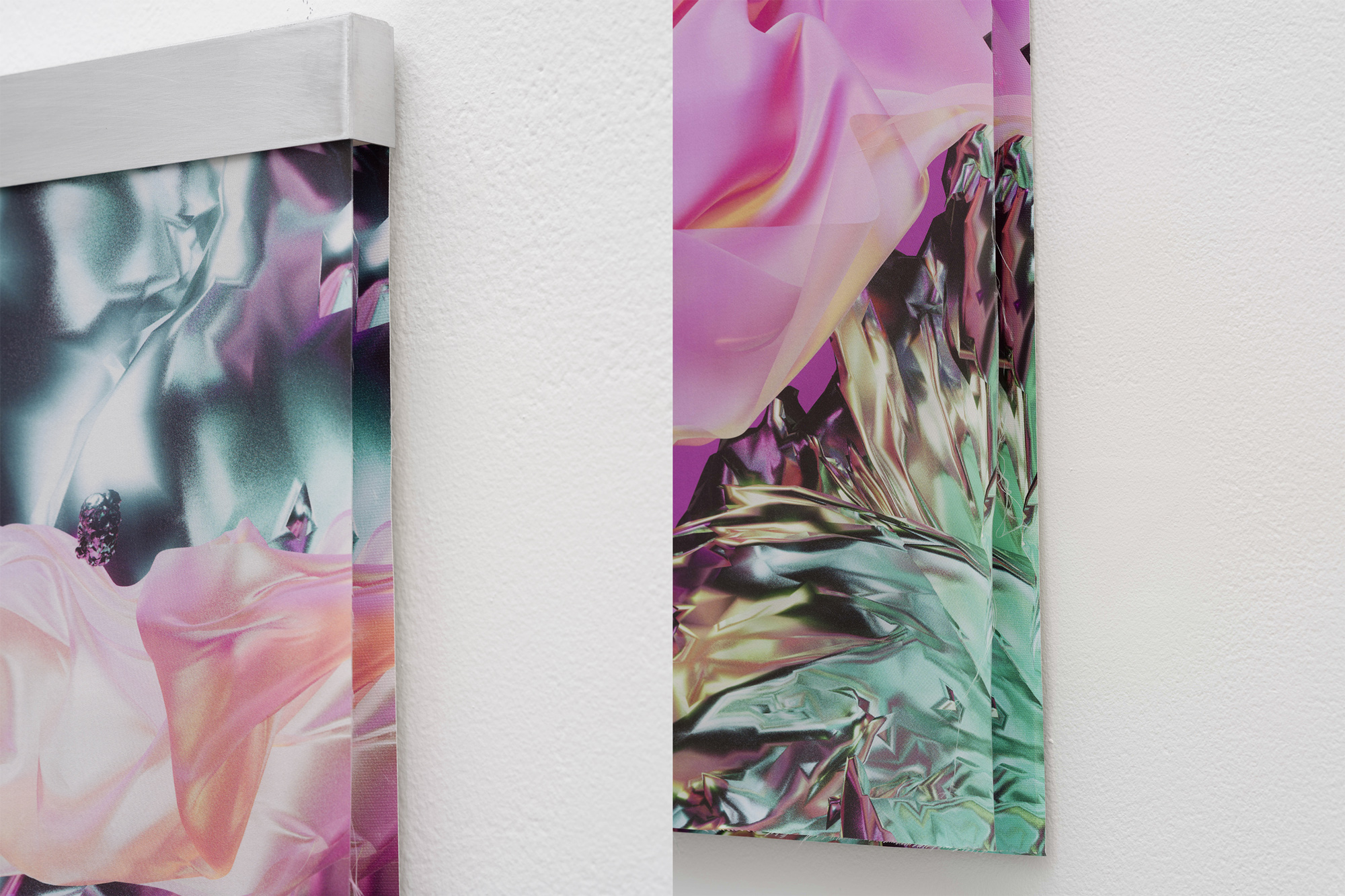
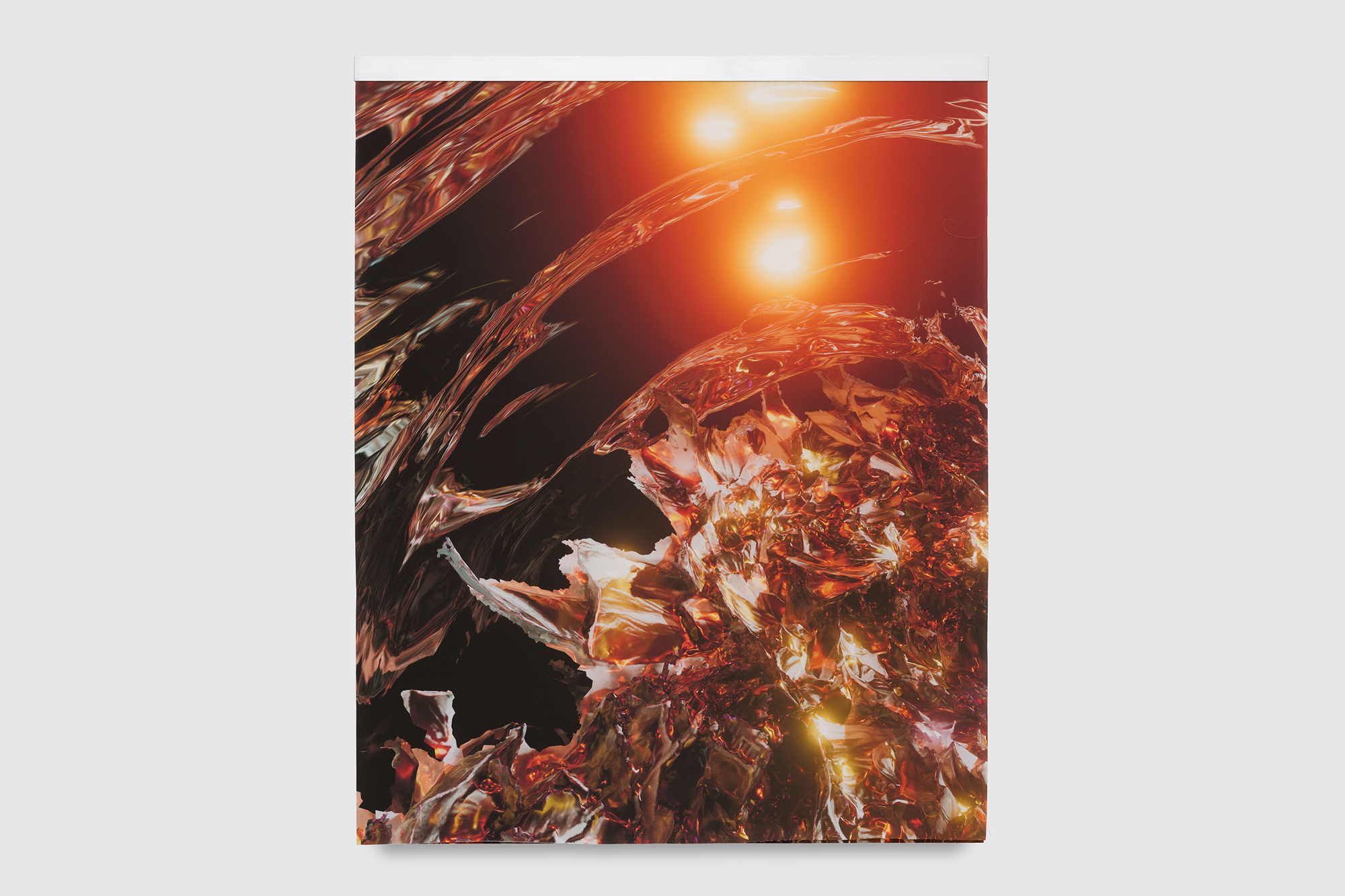

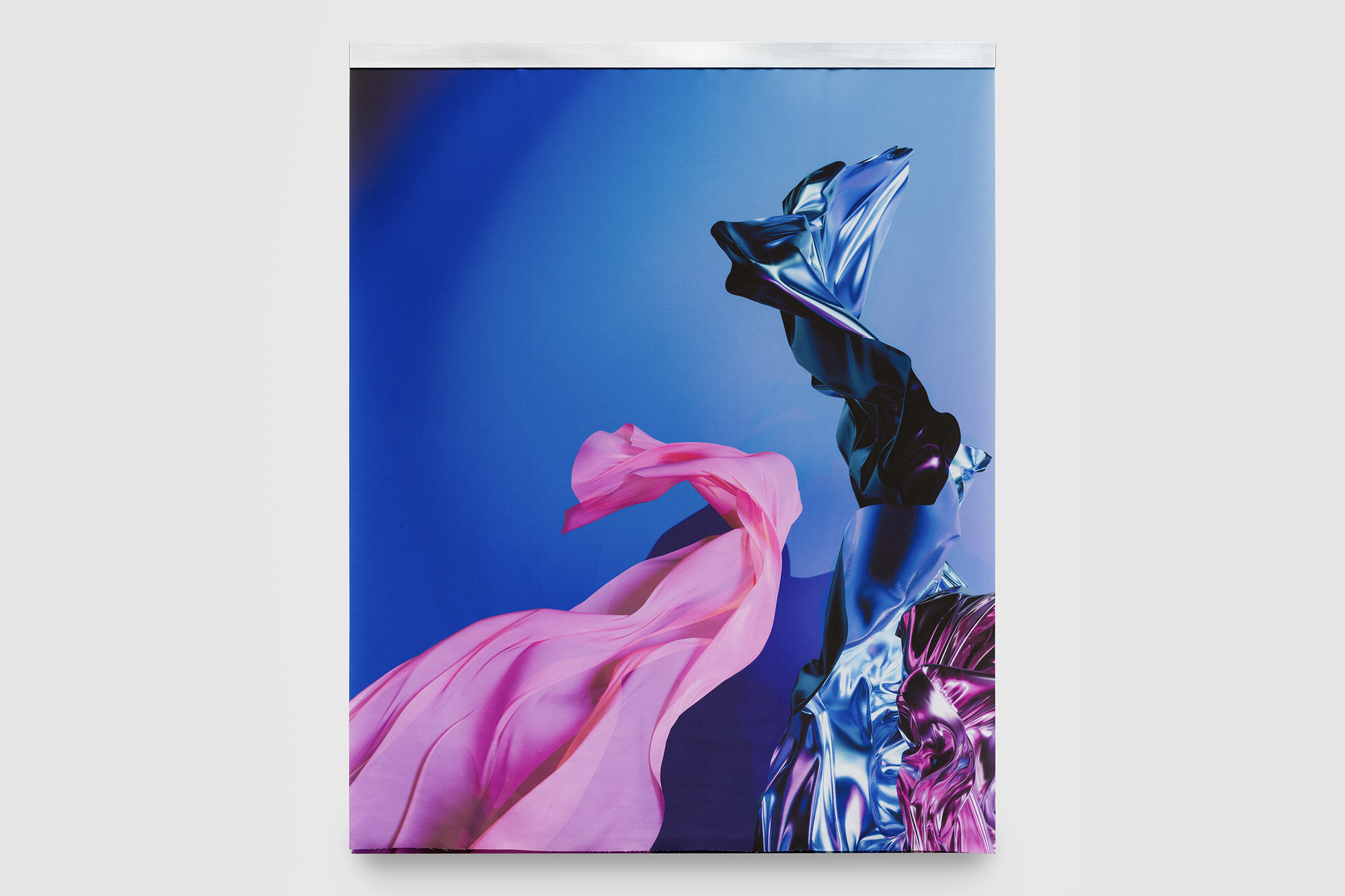
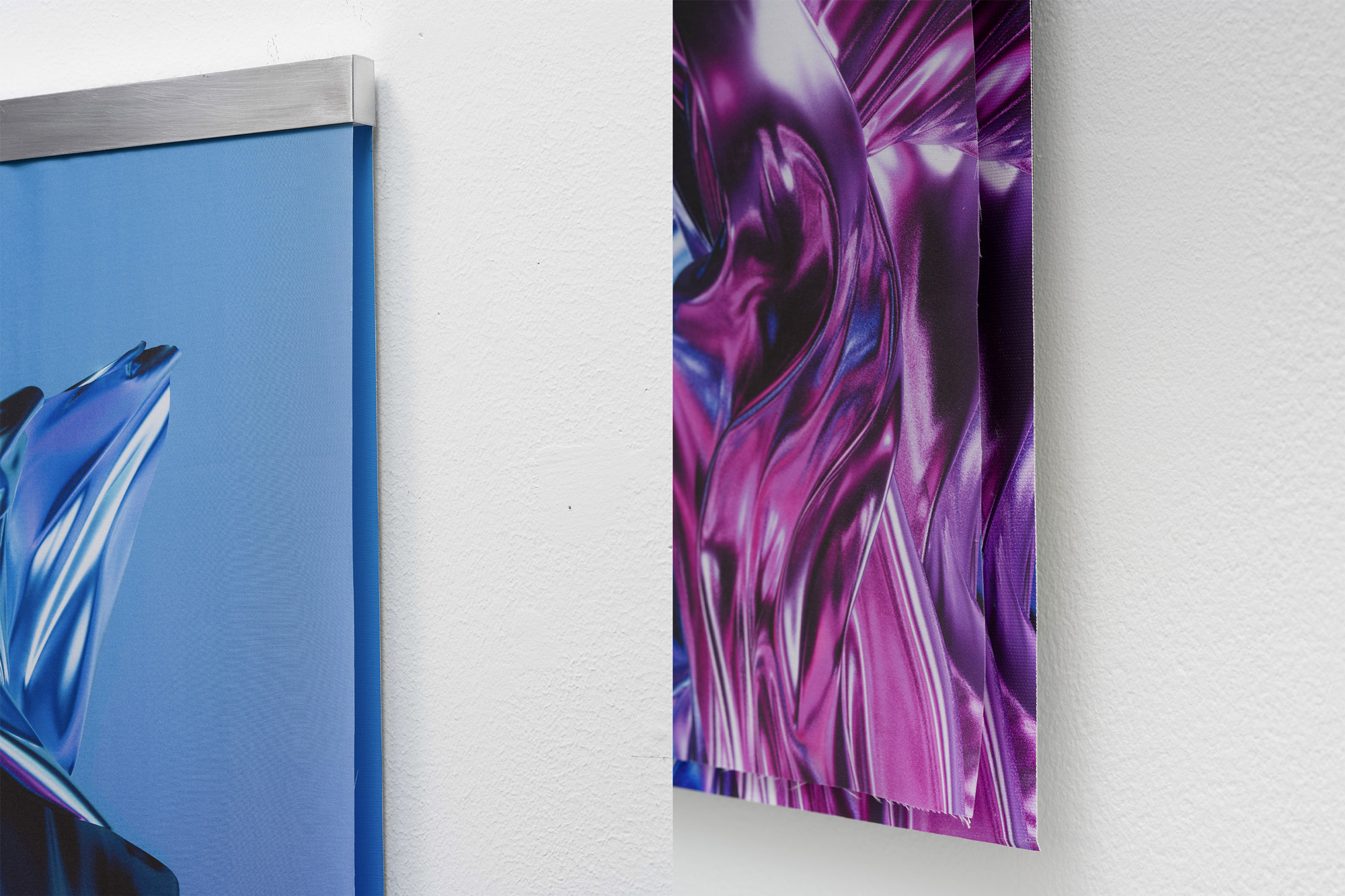
The WIDOWS, a series of wall-based sculptural works evocative of elaborate flora or dramatically plumed birds, are built from torn paper and printed silk heavy with graphite, ink, and paint. Three Widows hang in the main gallery of the exhibition. If the jagged edges darkened with carbon recall a fire’s charred remains, these works are the phoenix rising from the ashes, demonstrating the constant cycle of death and rebirth. Their beauty evinces an ecofeminist sense of hope, a faith in nature’s vast capacity for healing and regeneration.
The primary floor of the exhibition also includes a suite of Distortion collages in a range of sizes. These works combine soft graphite drawings and collaged elements on white iridescent paper, mounted to aluminum, creating a sense of irresolvable space between the digital and the physical. Each element reads as an isolated pixel in a larger image and as a window into a wider world, collapsing distinctions between natural and manufactured perspectives.


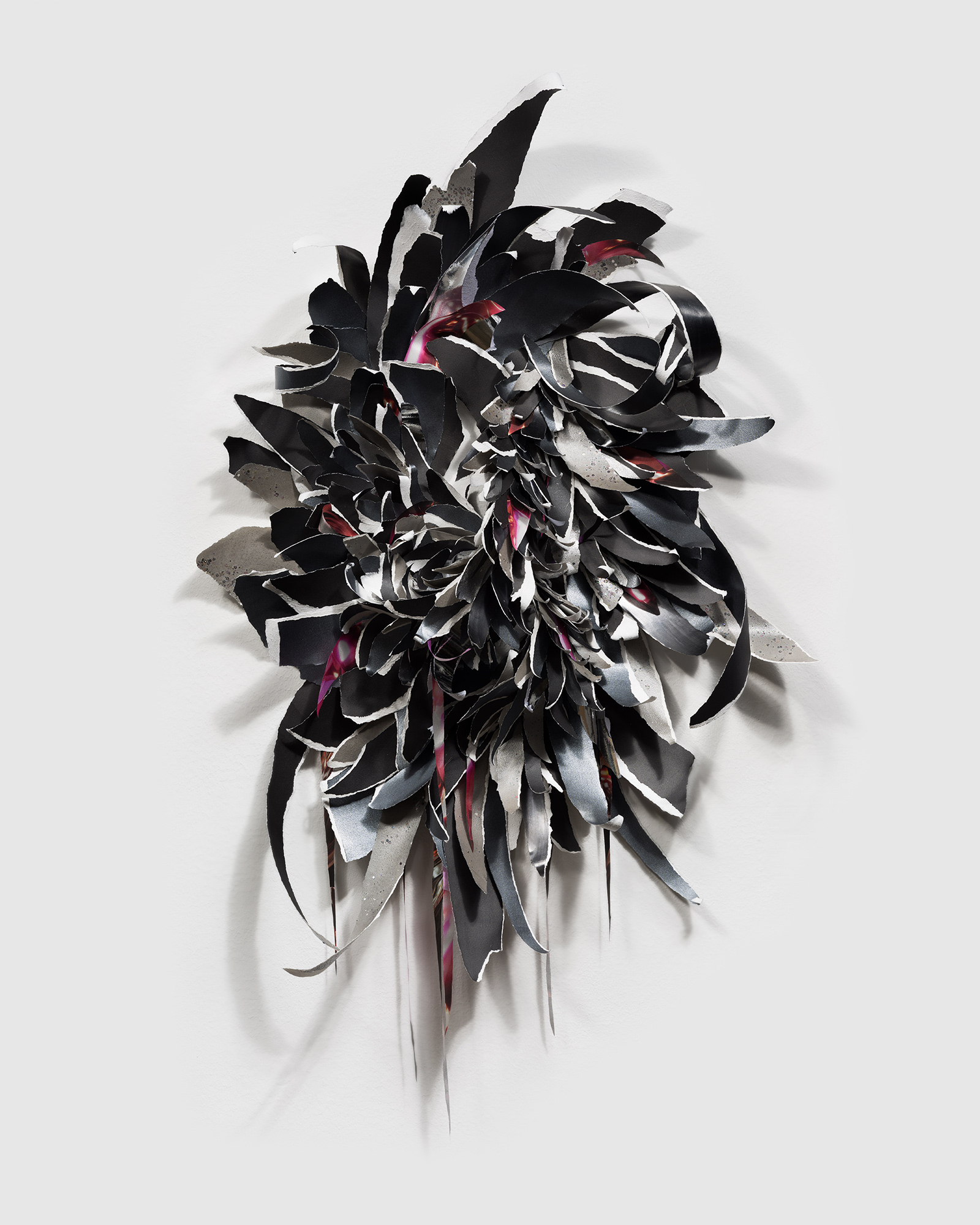
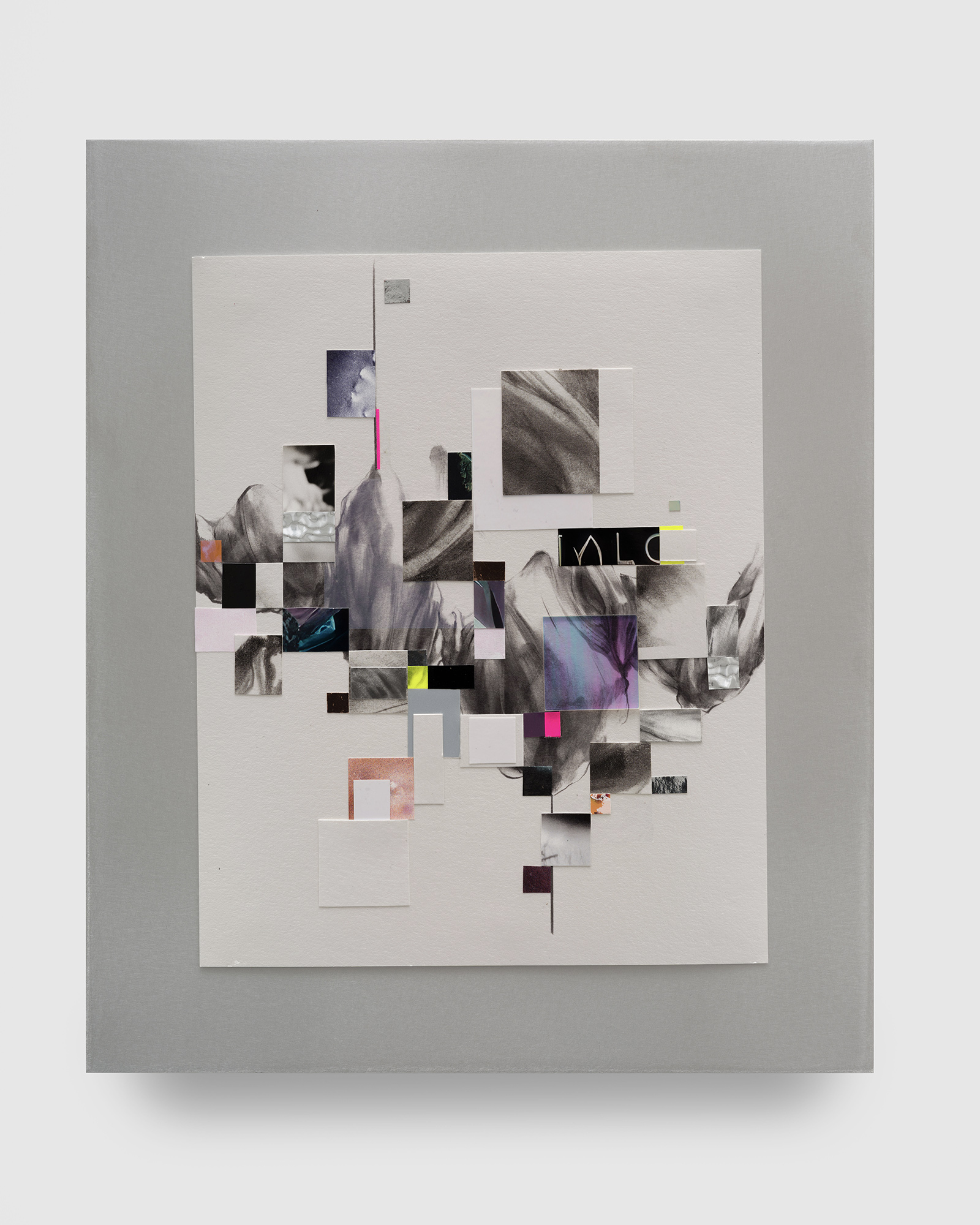
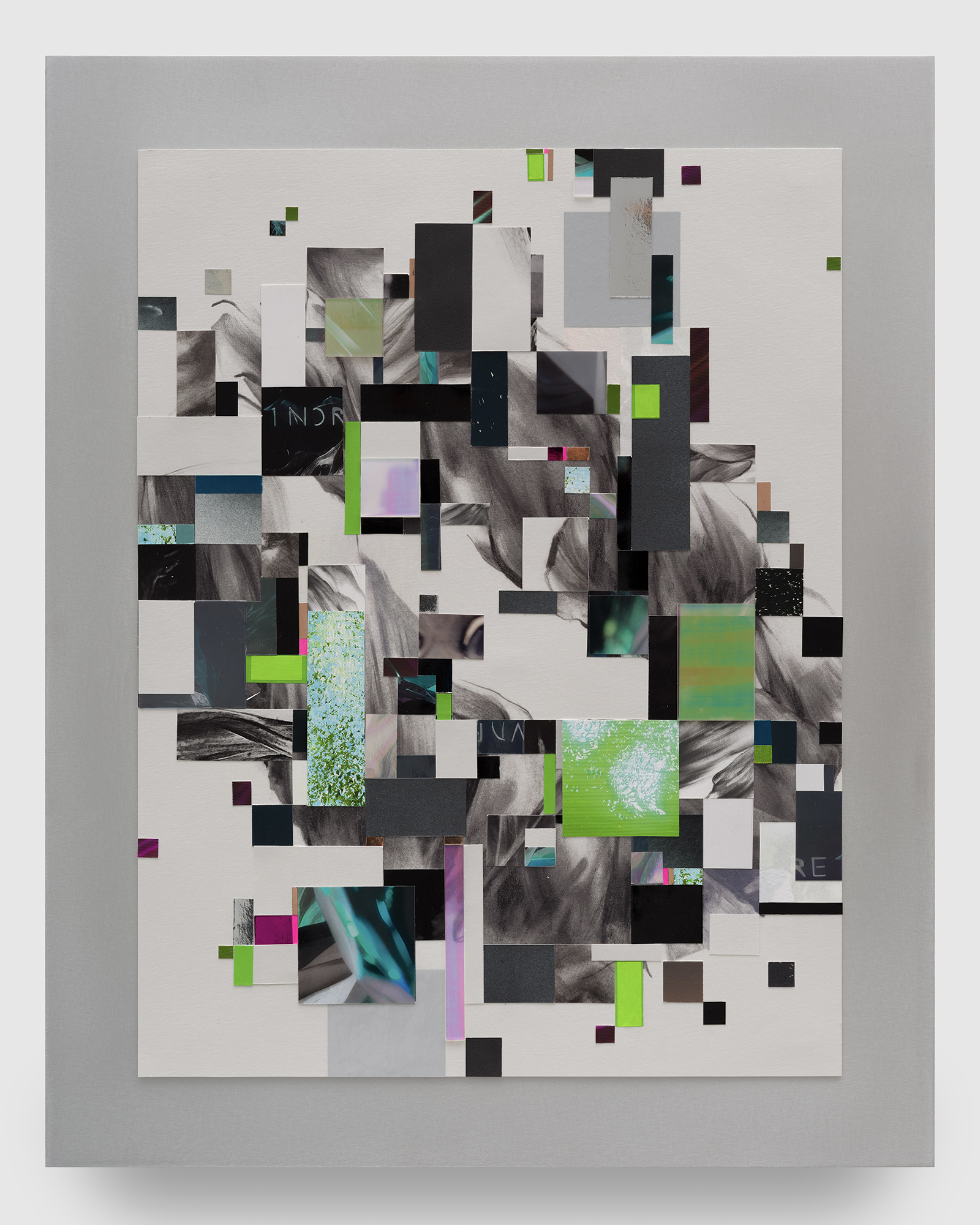
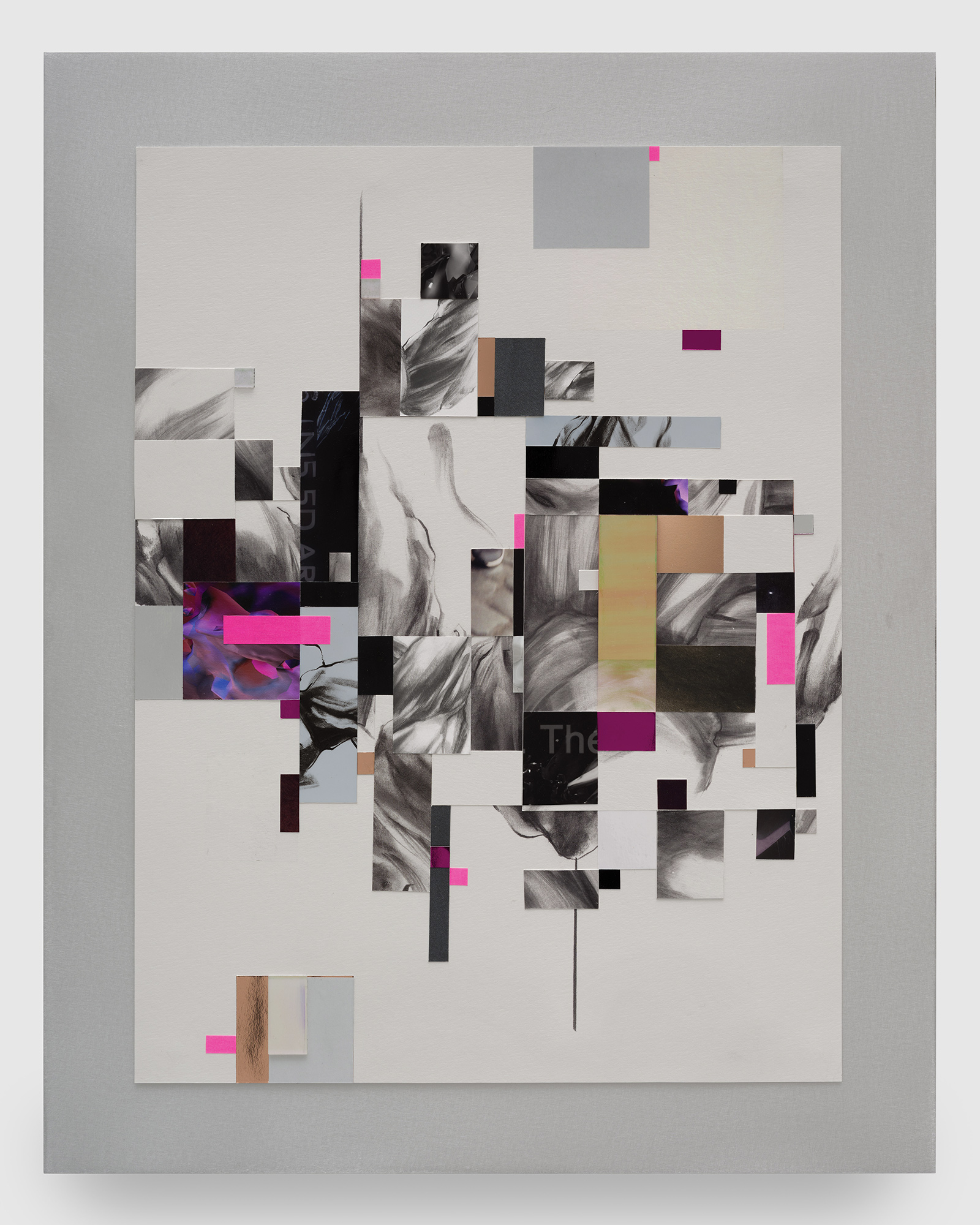

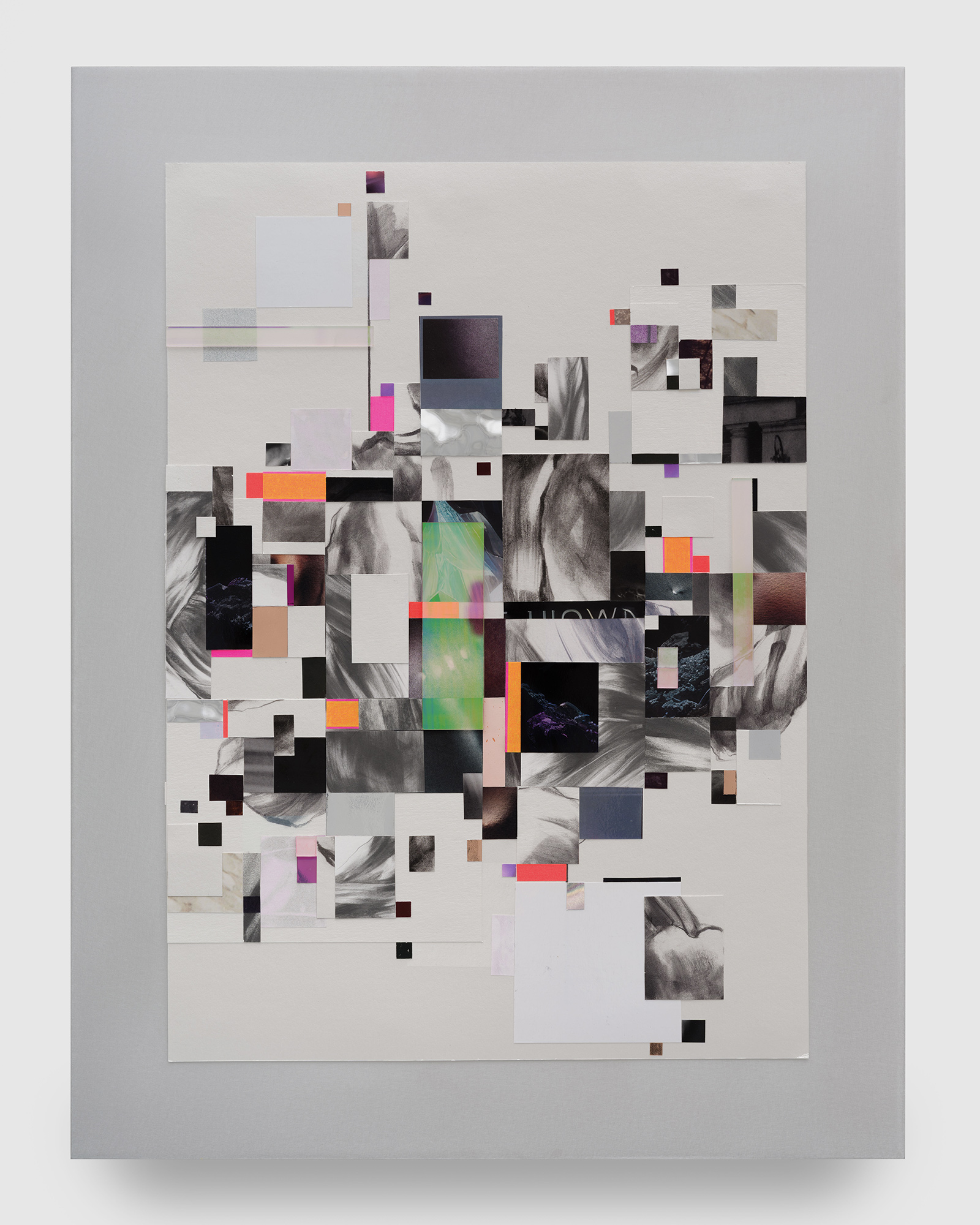
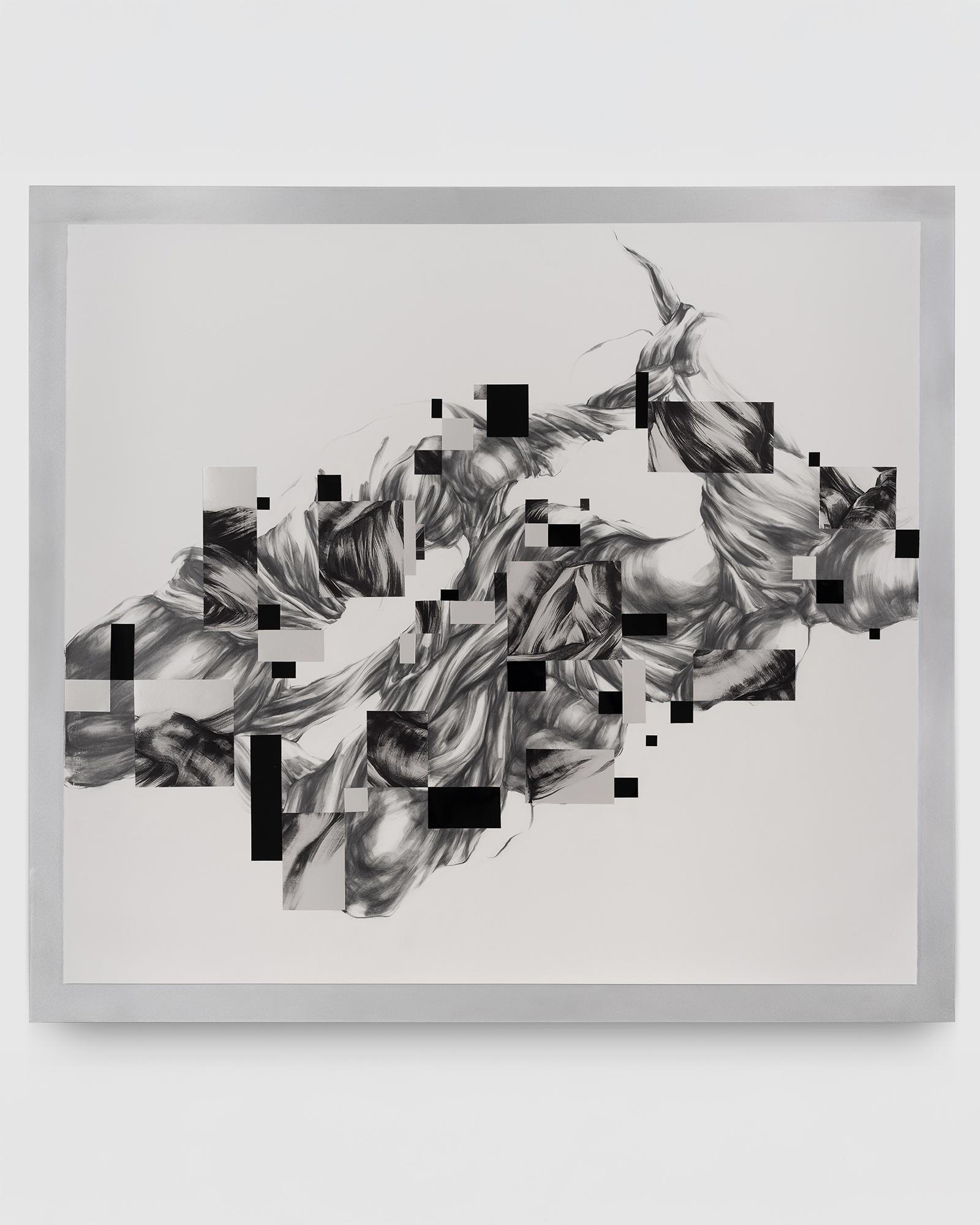
Downstairs, Baker Cahill’s massive Slipstream installation stretches across the walls of the basement gallery like a living organism or sprawling botanical landscape. The sculptural work is made from an archive of graphite on paper work encompassing over a decade of drawing, torn and reassembled into something completely new. Slipstream retains the energy of the original drawings like a beating heart at its core, a feeling amplified by a dynamic projected image that animates the work in movement and light. Slipstream invites the audience to reconsider their perception, as the work seems to slip between material and immaterial forms, resisting easy interpretation.
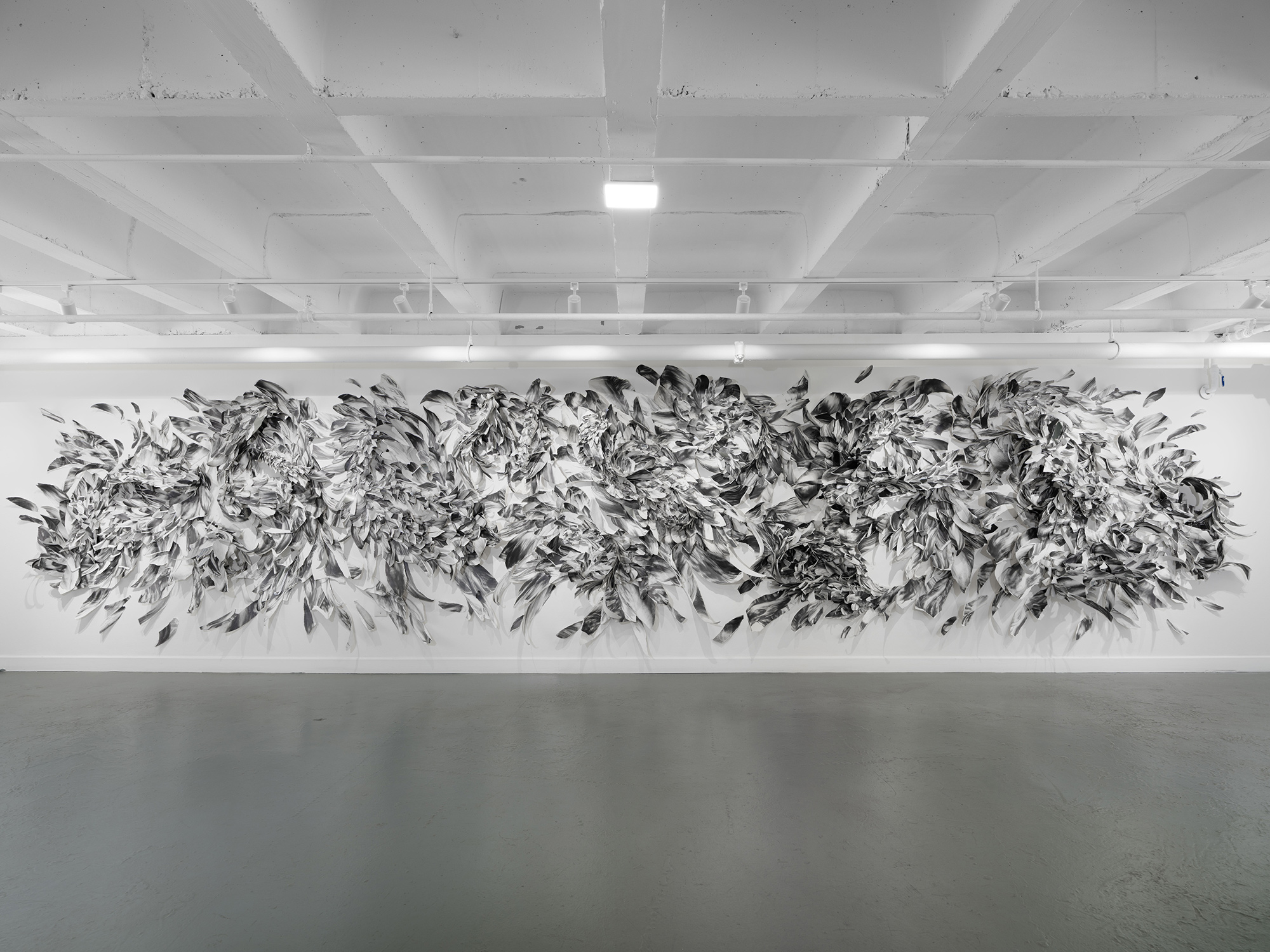
The exhibition also includes Baker Cahill’s film Carbon 1, the first in a series of six films, one for each of the planet’s six mass extinction events – the last of which we are currently living through. Carbon 1 opens on a lush green landscape, slowly panning towards a rippling body of water. The horizon is lit by the glow of several acid-colored flames, the largest growing into a swirling fire tornado. Barely visible beneath the surface of the water lies the remains of the fossil fuel industries and technofeudalist system that contributed to this destruction. Pixelated distortions increasingly obscure Baker Cahill’s vision of a burning planet, much like the flood of disinformation that seeks to deny the realities of climate change. These interruptions recall the accreted images of the Distortion works, brought to life here as they grow like a digital virus. The occlusion created by pixelated noise refers first to the structure of diffusion models, which involve noising and denoising imagery during training to “learn” how to produce AI images. It also underscores how algorithmic social media structurally incentivizes noise over signal.
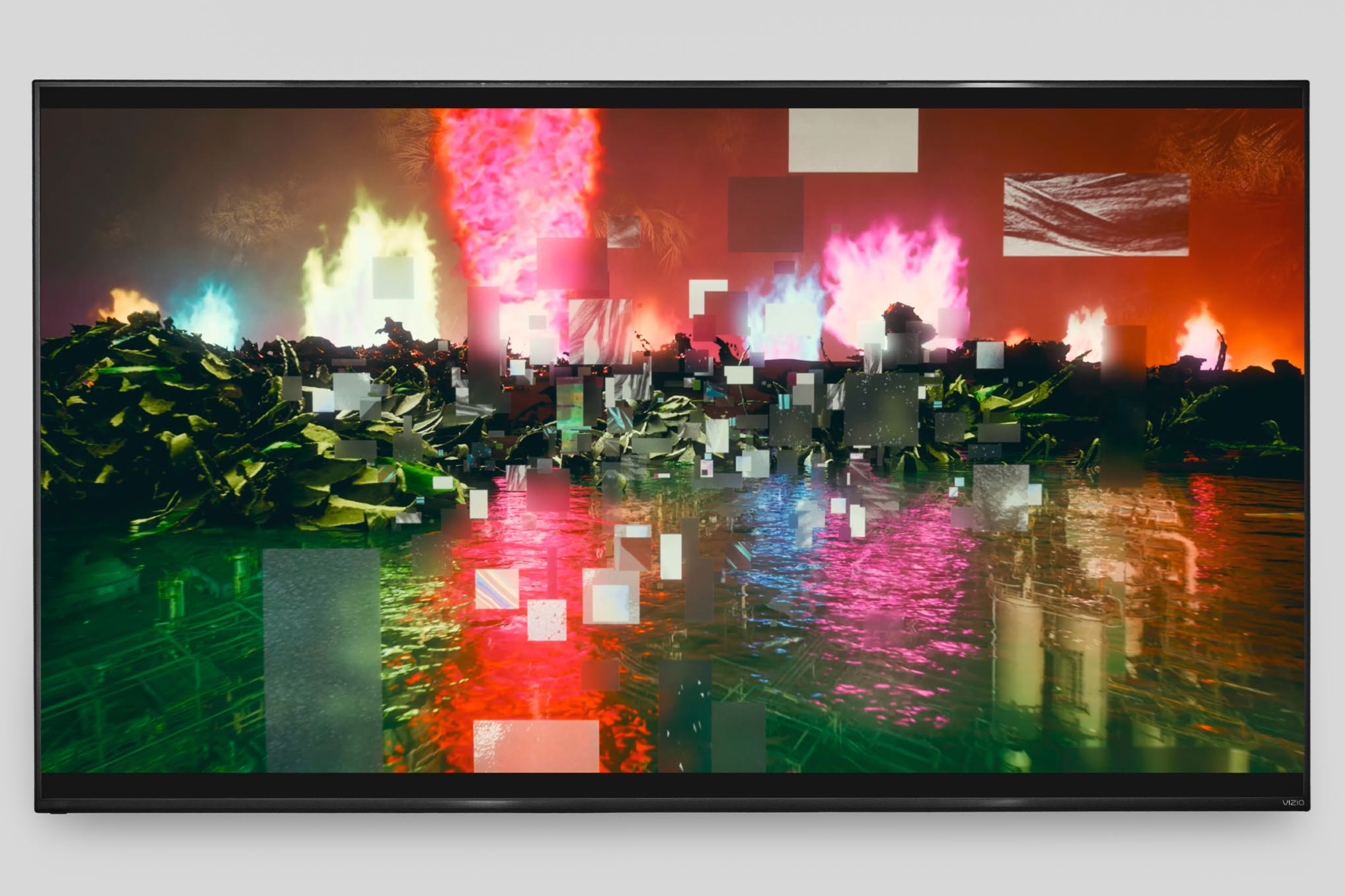
Carbon I Digital Animation Film 2:30 2025
News
©2024 Nancy Baker Cahill Studio. All rights reserved.